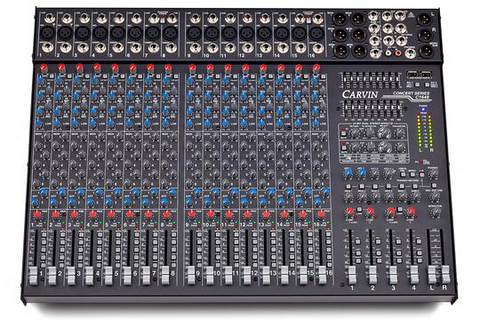-
Audio
-
Guitar
-
Bass
-
Blog
-
SALE
- Financing
- Support
- SINCE 1946
January 03, 2017

In the last segment, we discussed the basic functions of mixers and why they are essential to a live sound setup and the everyday gigging musician. In this piece we will discuss the different types of mixers available and help you decide which one is best for your setup.
Although different types of mixers all serve the same general purpose, certain types are more suited to do the job than others. The mixer required for a band practice will be very different from one that is used in a professional arena rock show, for instance. Knowing the differences and choosing the correct one will help you spend less time twiddling knobs and more time playing music!
The Carvin Audio XP1000L is lightweight and powerful, offering 1200RMS from three power amplifiers and weighing in at only fifteen pounds!
The Carvin Audio S600B is battery powered so you can take it on the go for outdoor gigs.
October 13, 2025
Carvin TRC Active Column Array System features and setup video. Watch this video to discover the features and benefits of our active column array sound system. TRC Powered Column Array Systems offer portability with high SPL levels that project up to 400’ with exceptional clarity. Unsurpassed high frequency and deep bass response will place the audience in the center of your performance. TRC Systems are scalable and are available in 2000W, 4000W, and 8000W models.
June 18, 2025
Carvin Audio teams up with Red Bull to provide audio for the VIP experience in Des Moines for the 2025 Soap Box Race Iowa. The TRC Active Column Array System was used for the event.
June 13, 2025
The Carvin TRx5000 Series Line Array System was deployed for the Sheffield School of Dance annual recital at the Mitchell Center on the campus of the University of South Alabama.
Sign up to get the latest on sales, new releases and more…
NoFraud Frequently Asked Questions
"Make a joyful noise unto the Lord all of the earth; make a loud noise and rejoice and sing praises. Sing to the Lord with the harp and the voice of the psalm." - Psalm 98:4-5
© 2025 Carvin Audio.
Carvin Corp.
POS and Ecommerce by Shopify
